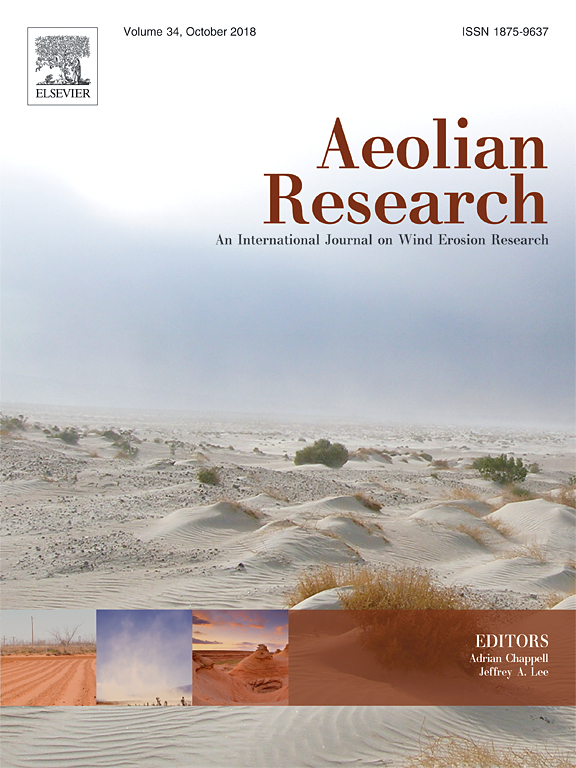Ver ítem
- xmlui.general.dspace_homeCentros Regionales y EEAsCentro Regional La Pampa - San LuisEEA AnguilArtículos científicosxmlui.ArtifactBrowser.ItemViewer.trail
- Inicio
- Centros Regionales y EEAs
- Centro Regional La Pampa - San Luis
- EEA Anguil
- Artículos científicos
- Ver ítem
A wind-tunnel study on saltation and PM10 emission from agricultural soils
Resumen
PM10 emission depends on the texture and the aggregation state of a soil. A decisive but less studied factor is the saltation fraction of the soil (fraction between 100 and 500 μm). Six soils of contrasting textures were selected, and a wind tunnel study was carried out under three different saltation conditions: increased saltation, in which a sample of the saltation fraction was added to the air stream prior to the soil bed; no saltation added, in which
[ver mas...]
PM10 emission depends on the texture and the aggregation state of a soil. A decisive but less studied factor is the saltation fraction of the soil (fraction between 100 and 500 μm). Six soils of contrasting textures were selected, and a wind tunnel study was carried out under three different saltation conditions: increased saltation, in which a sample of the saltation fraction was added to the air stream prior to the soil bed; no saltation added, in which the soil bed eroded without the addition of extra saltation fraction; and only saltation, in which the saltation fraction was injected into the air stream in the absence of the soil bed. Results indicated that the saltation efficiency for PM10 emission increased with the fine fraction content of the soil and decreased with the sand content, but this process showed a complex behavior depending on the cohesion and stability of the aggregates. An index for describing the saltation efficiency of the studied soils was proposed based on the combination of three parameters: the PM10 content, the amount of saltation fraction available in the soil surface, and an aggregation parameter (clay × organic matter content). Increasing the saltation rate increased the PM10 emission from the eroding soil bed, except for the sandy soil. Results suggest that the main mechanisms of PM10 emission under saltation conditions differ according to the soil texture: detachment of the PM10 adhered to the grains of sand predominates on sandy soils and fragmentation on finer soils, but both processes occur together on high-emitting soils of intermediate textures.
[Cerrar]

Autor
Avecilla, Fernando;
Panebianco, Juan Esteban;
Buschiazzo, Daniel Eduardo;
Fuente
Aeolian research 22 : 73-83. (September 2016)
Fecha
2016-09
Editorial
Elsevier
ISSN
1875-9637
Formato
pdf
Tipo de documento
artículo
Palabras Claves
Derechos de acceso
Restringido
 Excepto donde se diga explicitamente, este item se publica bajo la siguiente descripción: Creative Commons Attribution-NonCommercial-ShareAlike 2.5 Unported (CC BY-NC-SA 2.5)
Excepto donde se diga explicitamente, este item se publica bajo la siguiente descripción: Creative Commons Attribution-NonCommercial-ShareAlike 2.5 Unported (CC BY-NC-SA 2.5)

